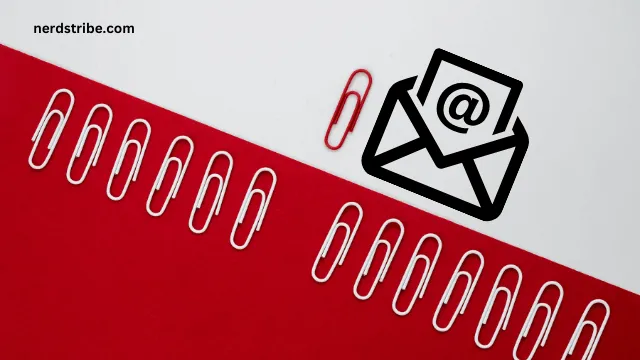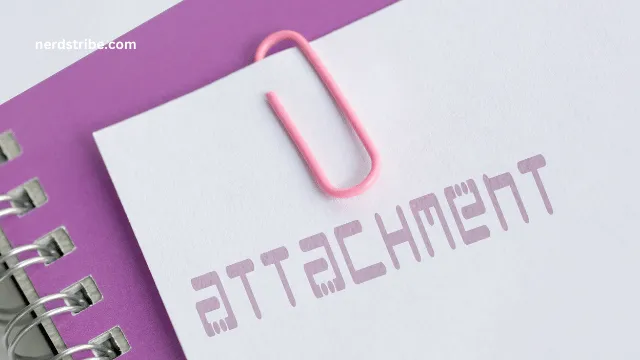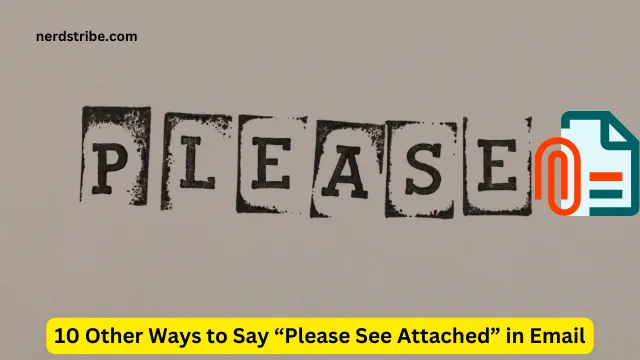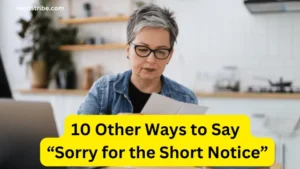Email communication is a cornerstone of professional life, and crafting the perfect message can make all the difference in how your words are received. One phrase that appears repeatedly is “Please see attached.” While it gets the point across, it’s often overused and can feel impersonal or robotic. Imagine if you could convey the same message while adding a touch of warmth, professionalism, or creativity to your emails.
The way you frame your words can significantly impact the recipient’s perception of your email. Whether you’re sharing a proposal with a client, forwarding essential documents to a colleague, or sending an update to your team, how you phrase attachments can set the tone for the conversation. A thoughtful alternative to “Please see attached” not only makes your email stand out but also shows that you’ve put effort into your communication.
In this blog, we’ll dive into 10 creative and professional alternatives to “Please see attached.” These options will help you tailor your tone to the situation, whether formal, casual, or somewhere in between. Let’s explore how to make your emails more effective and engaging!

Contents
- 1 1. Attached, You’ll Find…
- 2 2. I’ve Included [File Name] for Your Reference
- 3 3. Here Is [Document/File Name] for Your Review
- 4 4. Please Find the Attached [File Name]
- 5 5. Enclosed Is [File Name]
- 6 6. The Attached Document Includes…
- 7 7. You’ll Find [File Name] Attached to This Email
- 8 8. I’ve Attached [File Name] for Your Convenience
- 9 9. As Requested, Here Is [File Name]
- 10 10. Kindly Refer to the Attached [File Name]
- 11 Conclusion
- 12 FAQs
- 12.1 Why should I avoid using “Please see attached” repeatedly?
- 12.2 Are these alternatives suitable for formal emails?
- 12.3 Can I use these phrases in casual emails?
- 12.4 How can I choose the right alternative?
- 12.5 Should I include a description of the attachment?
- 12.6 What if the recipient doesn’t notice the attachment?
1. Attached, You’ll Find…
This option is straightforward and polite. It works well in formal emails where clarity is essential.
- Example: “Attached, you’ll find the project report for your review.”
2. I’ve Included [File Name] for Your Reference
This phrase adds a touch of personalization by specifying the file name, making it clear and easy for the recipient.
- Example: “I’ve included the budget summary for your reference. Let me know if you have any questions.”
3. Here Is [Document/File Name] for Your Review
Use this when sharing a document that requires feedback or approval, keeping the tone professional.
- Example: “Here is the draft proposal for your review. Please share your thoughts at your earliest convenience.”
4. Please Find the Attached [File Name]
This is a classic but slightly more formal variation of “Please see attached,” suitable for corporate communication.
- Example: “Please find the attached invoice for this month’s services.”
5. Enclosed Is [File Name]
This phrase is brief and professional, often used in formal business correspondence.
- Example: “Enclosed is the updated contract for your signature.”

6. The Attached Document Includes…
Use this when you want to give the recipient a quick preview of the document’s content, adding context to your email.
- Example: “The attached document includes the meeting agenda and discussion points.”
7. You’ll Find [File Name] Attached to This Email
This phrase is clear and friendly, making it ideal for internal communication or casual exchanges.
- Example: “You’ll find the marketing strategy draft attached to this email. Let’s discuss it in our next meeting.”
8. I’ve Attached [File Name] for Your Convenience
Adding “for your convenience” makes the tone polite and customer-focused, ideal for client emails.
- Example: “I’ve attached the product catalog for your convenience. Let me know if you’d like more details.”
9. As Requested, Here Is [File Name]
This option acknowledges a previous conversation or request, adding a personal touch.
- Example: “As requested, here is the signed agreement. Please confirm receipt.”
10. Kindly Refer to the Attached [File Name]
This phrase maintains a formal tone and is suitable for professional emails in corporate environments.
- Example: “Kindly refer to the attached summary for more details on the project timeline.”
Conclusion
While “Please see attached” is a tried-and-true phrase, it’s not the only way to direct someone’s attention to an attachment in an email. Choosing thoughtful and varied alternatives can enhance your communication, making it feel more engaging and tailored to the recipient.
Whether you’re crafting an email for a colleague, client, or supervisor, small changes in phrasing can leave a positive and lasting impression.
These 10 alternatives allow you to adjust the tone of your email depending on the context, ensuring your message is clear, professional, and personable. Next time you’re sending an attachment, consider using one of these options to elevate your email and stand out in the recipient’s inbox.
FAQs
Why should I avoid using “Please see attached” repeatedly?
Using the same phrase repeatedly can make your emails feel monotonous and impersonal. Exploring alternatives adds variety and helps convey thoughtfulness.
Are these alternatives suitable for formal emails?
Yes, options like “Enclosed is [File Name]” and “Please find the attached [File Name]” work well in formal and professional settings.
Can I use these phrases in casual emails?
Absolutely! Friendly phrases like “You’ll find [File Name] attached to this email” work perfectly for informal or internal communication.
How can I choose the right alternative?
Consider the tone and purpose of your email. For formal communication, use professional phrases, while casual tones work best for informal settings.
Should I include a description of the attachment?
Yes, providing a brief description or purpose of the attachment makes your email clearer and more informative.
What if the recipient doesn’t notice the attachment?
To avoid this, you can add a polite reminder, such as, “Let me know if you have trouble accessing the file.” This ensures effective communication.








